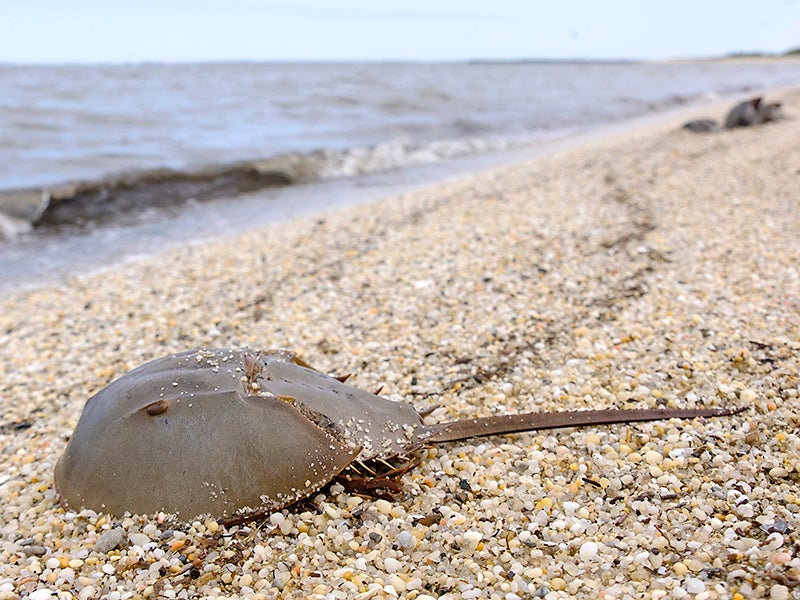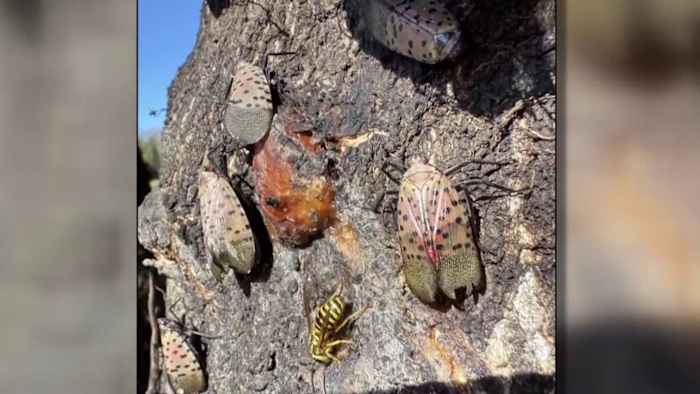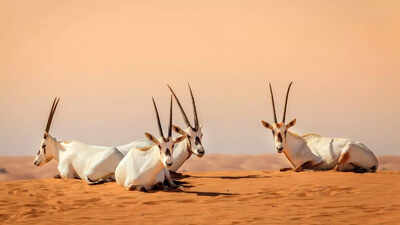More than 10,000 species on brink of extinction need urgent action: Study – Mongabay

Report on the Global Status of Critically Endangered Species and Alignment with Sustainable Development Goals
1.0 Executive Summary
A comprehensive assessment reveals that 10,443 species are now classified as Critically Endangered, facing an imminent risk of extinction. This biodiversity crisis directly undermines the achievement of the Sustainable Development Goals (SDGs), particularly SDG 15 (Life on Land) and SDG 14 (Life Below Water). The primary drivers of this decline—unsustainable agriculture, logging, and pollution—highlight a failure to meet SDG 12 (Responsible Consumption and Production). However, the report indicates that targeted conservation strategies are effective and financially feasible, requiring global partnerships and political will in line with SDG 17 (Partnerships for the Goals) to reverse these trends.
2.0 Current State of Global Biodiversity Loss
2.1 Scale of the Crisis
The current state of global biodiversity represents a significant challenge to the targets of SDG 15, which aims to halt biodiversity loss. Key findings indicate a severe and accelerating crisis:
- A total of 10,443 species are identified as Critically Endangered, the final category before extinction in the wild.
- Over 1,500 of these species (15%) have populations of fewer than 50 mature individuals.
- More than half (56%) of all Critically Endangered species exhibit declining population trends, while only 0.5% are increasing.
- An alarming 13% of these species are designated as “possibly extinct,” awaiting confirmation of their disappearance.
2.2 Species Composition
The threat of extinction is distributed across various life forms, impacting the integrity of all ecosystems, a core concern of SDG 14 and SDG 15.
- Plants: Comprise the majority of Critically Endangered species at 60%.
- Vertebrates: Account for 25% of the total.
- Invertebrates: Make up the remaining 15%.
3.0 Geographic Distribution and Global Responsibility
3.1 Concentration of At-Risk Species
The geographic concentration of threatened species underscores the need for targeted international cooperation as outlined in SDG 17 and highlights issues of global equity central to SDG 10 (Reduced Inequalities).
- Just 16 countries are home to over half of all Critically Endangered species.
- Key hotspots include: The Caribbean, Atlantic coastal regions of South America, the Mediterranean, Cameroon, Lake Victoria, Madagascar, and Southeast Asia.
- Madagascar alone hosts 670 endemic Critically Endangered species, making national conservation efforts globally significant.
- Island ecosystems, which constitute less than 6% of global land, host approximately 40% of Critically Endangered species, demonstrating their extreme vulnerability.
4.0 Primary Threats and Their Link to Unsustainable Practices
The drivers of biodiversity loss are overwhelmingly anthropogenic and directly conflict with multiple SDGs, including SDG 12 (Responsible Consumption and Production), SDG 13 (Climate Action), SDG 14 (Life Below Water), and SDG 15 (Life on Land).
4.1 Terrestrial and Freshwater Threats
- Unsustainable Land Use: Agriculture, ranching, and logging are the principal threats, directly opposing the sustainable management of forests and halting land degradation as called for in SDG 15.
- Pollution: A primary threat to freshwater species, undermining efforts to protect freshwater ecosystems under SDG 15.
4.2 Marine Threats
- Unsustainable Fishing: Impacts nearly 75% of marine species, challenging the goals of SDG 14 to conserve and sustainably use marine resources.
4.3 Cross-Cutting Threats
- Invasive Species: The leading threat to invertebrates, disrupting ecosystem balance and contributing to biodiversity loss.
- Climate Change: A growing driver of extinction, directly challenging the objectives of SDG 13 to combat climate change and its impacts.
5.0 A Strategic Path Forward for Conservation
Despite the grim outlook, evidence confirms that conservation works. A strategic path forward requires a multi-faceted approach that integrates scientific methods with traditional knowledge and is supported by robust global partnerships, aligning with the framework of the SDGs.
5.1 Proven Conservation Actions
Success stories, such as the recovery of the Burmese roofed turtle and the golden lion tamarin, demonstrate that targeted interventions can improve the status of species. These actions directly contribute to achieving the targets of SDG 15.
- Habitat Protection: Safeguarding remaining habitats and Key Biodiversity Areas (KBAs) is essential. Currently, less than half of these critical areas are adequately protected.
- Active Management: Interventions such as invasive species removal and habitat restoration are required for many species.
- Specialized Programs: Ex-situ conservation, including captive breeding and reintroduction programs, is necessary for approximately half of all Critically Endangered species.
- Indigenous Partnerships: Integrating the traditional knowledge of Indigenous peoples, whose lands cover 28% of the world’s most important biodiversity areas, is critical for effective and equitable conservation, supporting both SDG 10 and SDG 15.
5.2 Financial Implications and the Role of SDG 17
The financial resources required to implement these conservation strategies are modest in the context of the global economy.
- The estimated annual cost to improve the status of all Critically Endangered species is between $1 billion and $2 billion.
- This figure represents a small fraction of global economic activity and is significantly less than the funds allocated to activities that harm biodiversity.
- Achieving this level of funding requires strong global partnerships between governments, the private sector, and civil society, as envisioned in SDG 17 (Partnerships for the Goals).
Analysis of Sustainable Development Goals in the Article
1. Which SDGs are addressed or connected to the issues highlighted in the article?
The article primarily addresses issues related to biodiversity loss and conservation, which directly connects to several Sustainable Development Goals (SDGs). The main SDGs identified are:
- SDG 15: Life on Land: This is the most relevant SDG, as the article’s central theme is the threat of extinction to terrestrial and freshwater species. It discusses the number of critically endangered species, the causes of their decline (deforestation, agriculture), the importance of habitat protection, and the need for conservation actions on land.
- SDG 14: Life Below Water: The article explicitly mentions threats to marine and freshwater species. It notes that fishing impacts a significant portion of marine species and names specific aquatic animals at risk, such as the vaquita porpoise, Yangtze finless porpoise, and various freshwater species threatened by pollution.
- SDG 13: Climate Action: The article identifies climate change as a direct driver pushing species toward extinction, citing examples like the Pearson’s aloe and giant quiver tree, whose populations have crashed. This links the biodiversity crisis to the need for climate action.
- SDG 17: Partnerships for the Goals: The article highlights the need for global cooperation, funding, and multi-stakeholder involvement. It mentions the financial cost of conservation ($1-2 billion annually), the concentration of endangered species in a few countries requiring targeted international support, and the essential role of partnerships between scientists, conservation organizations (like ZSL), and Indigenous peoples.
2. What specific targets under those SDGs can be identified based on the article’s content?
Based on the issues discussed, several specific SDG targets can be identified:
- Under SDG 15 (Life on Land):
- Target 15.5: “Take urgent and significant action to reduce the degradation of natural habitats, halt the loss of biodiversity and, by 2020, protect and prevent the extinction of threatened species.” The entire article is centered on this target, detailing the 10,443 critically endangered species on the brink of extinction and the urgent need for conservation.
- Target 15.8: “By 2020, introduce measures to prevent the introduction and significantly reduce the impact of invasive alien species on land and water ecosystems and control or eradicate the priority species.” The article states that “invasive species represent the top threat to invertebrates” and names “house rats, domestic goats, feral pigs and cats” as destructive examples.
- Target 15.2: “By 2020, promote the implementation of sustainable management of all types of forests, halt deforestation, restore degraded forests and substantially increase afforestation and reforestation globally.” The article identifies “farming, ranching and logging” as main threats and notes that “vast areas of forest have been denuded or fragmented.”
- Target 15.1: “By 2020, ensure the conservation, restoration and sustainable use of terrestrial and inland freshwater ecosystems and their services, in particular forests, wetlands, mountains and drylands…” The article emphasizes protecting remaining habitats and identifies nearly 3,000 “Key Biodiversity Areas” that are crucial for species survival.
- Target 15.a: “Mobilize and significantly increase financial resources from all sources to conserve and sustainably use biodiversity and ecosystems.” The article explicitly quantifies the financial need, stating that improving the status of these species “would cost between an estimated $1 billion and $2 billion annually.”
- Under SDG 14 (Life Below Water):
- Target 14.4: “By 2020, effectively regulate harvesting and end overfishing, illegal, unreported and unregulated fishing and destructive fishing practices…” The article supports this by stating that “fishing impacts nearly three-quarters of marine species.”
- Target 14.2: “By 2020, sustainably manage and protect marine and coastal ecosystems to avoid significant adverse impacts…” The article highlights threats to marine species like the vaquita and notes the concentration of endangered species in “Atlantic coastal regions.”
- Under SDG 13 (Climate Action):
- Target 13.2: “Integrate climate change measures into national policies, strategies and planning.” The article’s point that “climate change is also driving species toward extinction” underscores the need to incorporate biodiversity protection into climate policies.
- Under SDG 17 (Partnerships for the Goals):
- Target 17.9: “Enhance international support for implementing effective and targeted capacity-building in developing countries…” The finding that “just 16 countries hold more than half of all critically endangered species” points directly to the need for targeted international support in those nations.
3. Are there any indicators mentioned or implied in the article that can be used to measure progress towards the identified targets?
Yes, the article provides several quantitative and qualitative indicators that can be used to measure progress.
- For Target 15.5 (Protect threatened species):
- Red List Index (Indicator 15.5.1): The article is fundamentally based on the IUCN Red List, providing a baseline of 10,443 critically endangered species. Progress could be measured by a reduction in this number or an improvement in the status of these species.
- Population Trends of Endangered Species: The article states that 56% of all critically endangered species have declining populations, while only 0.5% are increasing. Tracking this percentage over time would be a direct indicator of progress.
- Number of Species Close to Extinction: The article mentions that over 1,500 species have fewer than 50 mature individuals remaining. A reduction in this number would indicate successful intervention.
- For Target 15.1 (Conserve key biodiversity areas):
- Proportion of Key Biodiversity Areas under protection (related to Indicator 15.1.2): The article states that “less than half” of the nearly 3,000 identified Key Biodiversity Areas have adequate protection. An increase in this proportion would be a clear progress metric.
- For Target 14.4 (End overfishing):
- Proportion of marine species affected by fishing: The article provides a baseline figure that “fishing impacts nearly three-quarters of marine species.” A decrease in this proportion would indicate progress.
- For Target 15.a (Mobilize financial resources):
- Financial resources mobilized for conservation: The article establishes a target funding need of $1 billion to $2 billion annually. Tracking the actual financial flows towards this goal would serve as an indicator of commitment.
4. Table of SDGs, Targets, and Indicators
| SDGs | Targets | Indicators Identified in the Article |
|---|---|---|
| SDG 15: Life on Land |
15.5: Halt biodiversity loss and prevent the extinction of threatened species.
15.8: Reduce the impact of invasive alien species. 15.2: Halt deforestation. 15.1: Conserve terrestrial and freshwater ecosystems. 15.a: Mobilize financial resources for conservation. |
– Number of critically endangered species (10,443). – Percentage of critically endangered species with declining populations (56%). – Number of species with fewer than 50 mature individuals (>1,500). – Percentage of critically endangered invertebrates threatened by invasive species (~33%). – Identification of logging and deforestation as main threats. – Proportion of Key Biodiversity Areas with adequate protection ( – Estimated annual funding needed for conservation ($1-2 billion). |
| SDG 14: Life Below Water |
14.4: End overfishing.
14.2: Protect marine and coastal ecosystems. |
– Percentage of marine species impacted by fishing (~75%). – Identification of specific threatened marine species (e.g., vaquita, Yangtze finless porpoise). |
| SDG 13: Climate Action | 13.2: Integrate climate change measures into national policies. | – Identification of climate change as a direct driver of extinction for specific species (e.g., Pearson’s aloe). |
| SDG 17: Partnerships for the Goals | 17.9: Enhance international support and capacity-building in developing countries. |
– Number of countries holding over half of all critically endangered species (16 countries). – Mention of the need for partnerships with Indigenous peoples and scientific institutions. |
Source: news.mongabay.com

What is Your Reaction?
 Like
0
Like
0
 Dislike
0
Dislike
0
 Love
0
Love
0
 Funny
0
Funny
0
 Angry
0
Angry
0
 Sad
0
Sad
0
 Wow
0
Wow
0
























;Resize=805#)
























































